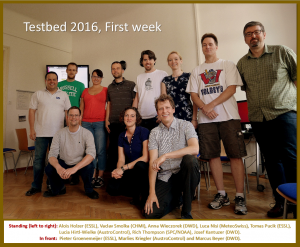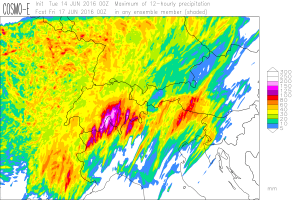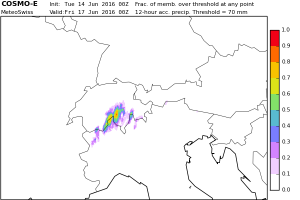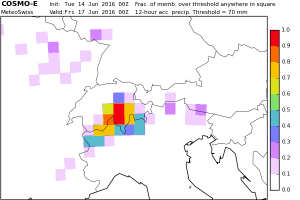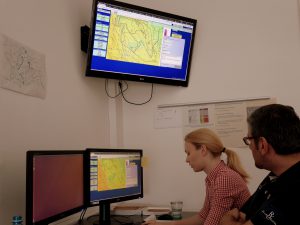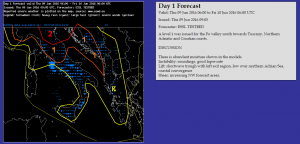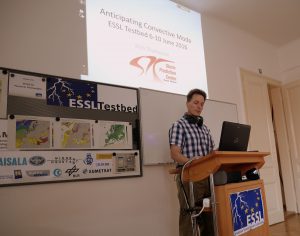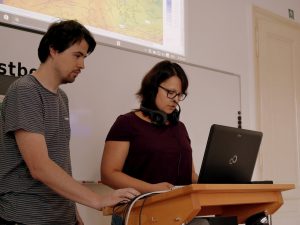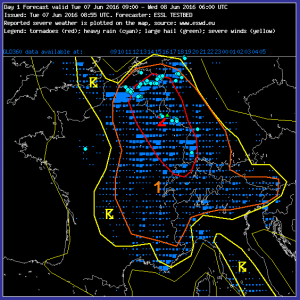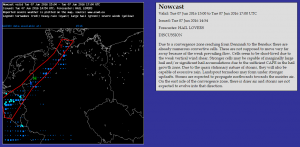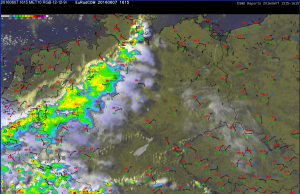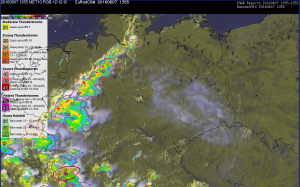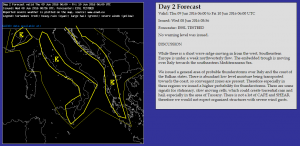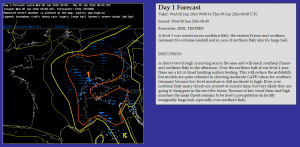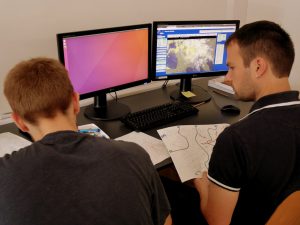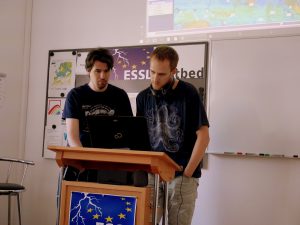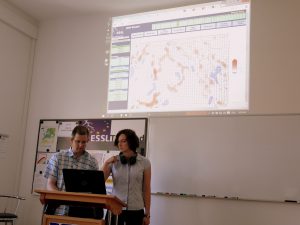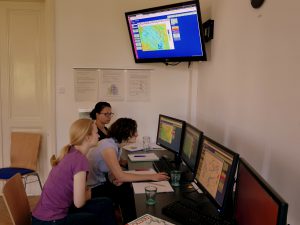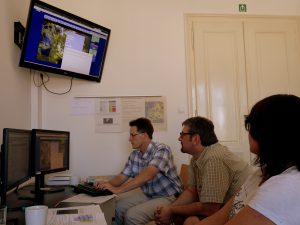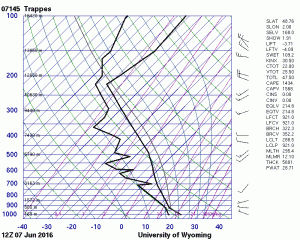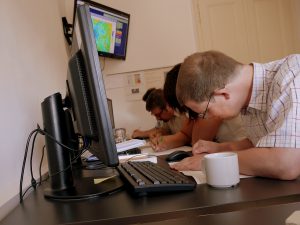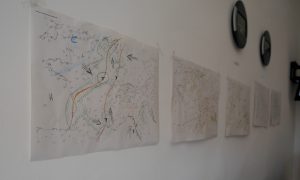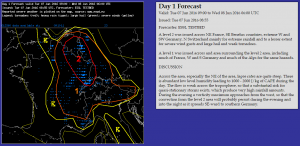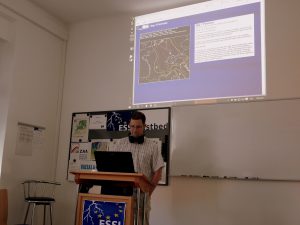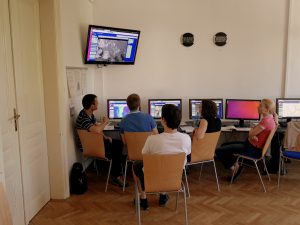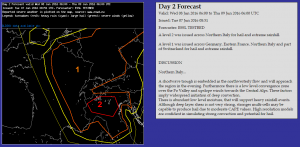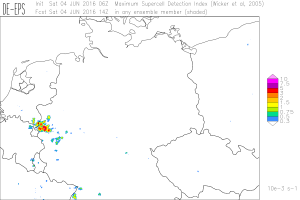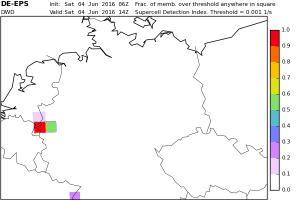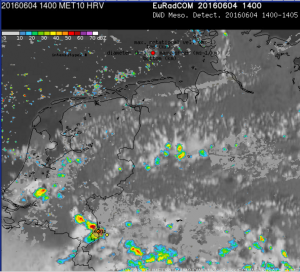On the last day of the testbed we again started with the verification of the last day, followed by an outlook for Day1 and Day2.
The participants of the group that forecasted the Day1 outlook decided two choose the western domain at least for two main reasons. A sharp short wave trough passing France during the day looks by far more dynamic than the storms that will for sure fire up over parts of Italy and the Balkan Peninsula. And second: The European Championship will start this evening in Paris.
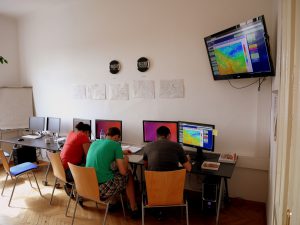
Downstream of an amplified short wave trough, southwesterly flow led to an advection of warm airmasses into France. Initially a lack of low level humidity was found due to the foehn winds from the Pyrenees. But corresponding to the short wave trough also a maximum of humidity is advected into Southern and Southwestern France later on. This will partly overlap with higher lapse rates downstream. That raises the possibility for at least a few hundred J/kg of CAPE. Lift is provided both by the approaching short wave trough and a well-defined surface convergence zone, respectively.
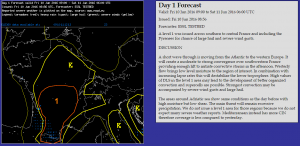
What brought us to the decision of issuing a LVL1 for the area of interest was the overlap of a high likeliness of storms and DLS values of 15 to 20 m/s.
During the night this risk diminishes due to the diurnal cycle as well as a reduction of the amplitude of the trough not staying as pronounced as before.
The second group decided to choose the eastern domain which already is and will be influenced also on Day2 by a strong trough with a corresponding surface low. The highest values of BL moisture can be found in a narrow band along the cold front. Having lapse rates between 6 to 6.5 K/km the combination with humidity is forecasted to result in a few hundreds of J/kg of MLCAPE. At the same time DLS is predicted to be very high with up to 30 m/s. However, initiation is a bit questionable but wherever storms may fire up they have an enhanced threat for severe weather.
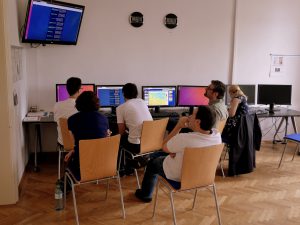
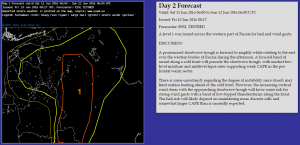
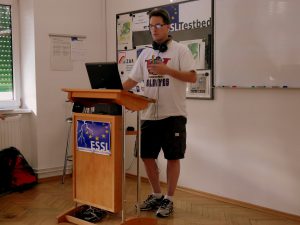
After forecasting and the online presentation of the results the testbed groups had another evaluation of the products. As an example we were looking on a case of 27th of May concerning storms over Southern Germany at 16 UTC. It is visible that several products really gave a good hint for severe weather that finally was reported with the large hail events that are visible in the images.
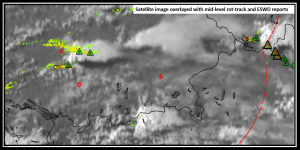
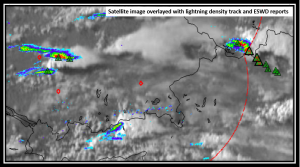
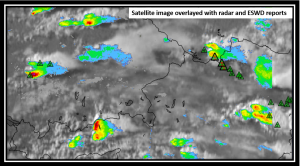
It is Friday and so the first testbed week ends. All participants were leaving us happy and satisfied and we had a great time with really enthusiastic participants. Having a look to the upcoming testbed week it seems that a high-end weather situation will be present especially during the second half of the week. So… really looking forward.

